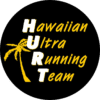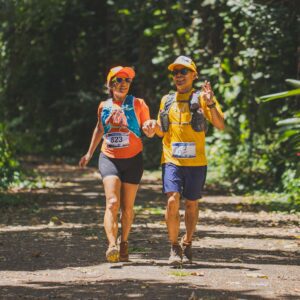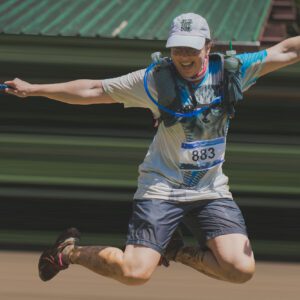Injury Contemplation
I came down the Kealia Trail last Saturday morning convinced that I was done. I had 38 miles on my feet and was ready to call it a day, and more importantly my quads were telling me they didn't like me very much. But when I got to the bottom I let the morning crowd con me into going back up. Actually they would have let me go home, but I was too macho to admit I was quiting so I followed them back up. I finished the day with almost 54 miles on my feet.
It felt good. However by Monday my right knee was giving me a bit of a problem. Nothing serious but I skipped my Monday run, and it put me even on where I would have been if I had taken it easy on Saturday and done the Monday. It set me to thinking about listening to one's body, and I was reminded of an old post I made last year when we lost a few people to injury. I pulled out the old post and reread it. It applies to us all, beginner, intermediate, and old trail 'pro' . I post it again in the hopes that it reminds us all that we are made of flesh (muscle, tendon, ligaments) and bone; all tissues that respond to our demands or mistreatment as the case may be.
We are now entering the long haul of Peacocks and HURT. The answers for most of us lie in the simple phrase 'Time on Feet." It doesn't matter how fast you do a Peacock loop, what matters is how many you can do. And often the amount of time on feet depends on the long term development curve of your own body. It can not be short cut without increasing the possibility of injury.
Here is that old post:
This is a comment that is not based on any particular runner’s experiences, and is not directed specifically at anyone. It is a general lamentation based on some observations I have had over the past years and is meant as a point of contemplation for all of us as we continue to meet the challenge of our ultra running ambitions.
There are some simple anatomical facts that many people do not seem to understand. The first is that muscle tissue is compliant. Muscles are relatively responsive to our demands and will grow, or shrink as need be over a matter of weeks or months. They are ‘red’ tissue, which is highly nourished by a rich blood supply.
Tendons and Ligaments are less responsive. They are a ‘white’ tissue, which receives a much more limited blood supply and as a result they are very delayed in their response to increasing physical demands. One of my professors of Physiology commented that tendons and ligament take as much as three to five times longer to respond to changing demands a muscles, and lag behind at increasing rates during rapid muscle growth.
Bones are not static but are indeed organic and responsive to physical demand. Bones take even longer to respond to changes in demand. Increased stresses will increase density and broaden attachment points for growing ligaments and tendons, but at a relatively slow rate of change when compared to muscles and even tendons and ligaments.
Now, with this in mind, picture you leg and its attempt to respond to your desire to be an Ultra runner. You get out on the trails and do ten miles and it hurts. You go home and your muscles respond in a matter of days and get a bit bigger. You go out again a few weeks later and you can do that 10 with far less muscle pain. You may even be able to go faster. However, your tendons will just be registering a need to increase in size. Your bones may be aware of a change in activity and demand but the increases in bone cells has just begun and will not be evident for months or even years.
As you continue to work on your hill climbing and running your legs begin to change their form. Standing in front of the mirror in Dionysian style you admire your progress and plan for ever longer challenges. A half dozen long runs and you are an Ultra-runner! However, your tendons are just awakening the need to grow and blood and nourishment is only beginning its long slow journey into the white tendenous and ligament tissues. You bone cells have registered the increasing impacts and slowly, very slowly, the cells begin to divide and grow. Far off in the future you will have tendons, ligaments, cartridge, and bone density to match the needs of a ten-mile jaunt through the hills.
But you are absorbed in the size of your muscles, and the resiliency of your heart, and the sound of the air moving through your expanding lungs; all tissues that respond rapidly to need. In months you are doing twenty mile training runs and dreaming of your first Ultra. You got it. You can keep pace with those old gray haired long-winded guys who always seem to trudge along at the back of the pack. You begin to run past them, to charge out and run with the rabbits. ‘It’s not so hard!’ you tell yourself. You have put in the work and you deserve to be running with the rapid deployment team. The words of caution from the old gray-backs sound like sour grapes. You don’t need to run with them any more, and you certainly don’t need to listen to a bunch of over-the-hill back of the packers.
But within your body, the tendon growth is far outpaced by the muscle tissue growth. The ligaments are still those of a short distance runner. Your bone tissues and density are not that different from the first day you started moving up a trail. You don’t realize it, but you have built yourself an overpowered racecar. A giant motor mounted on a frail frame that can power over a course, but lacks the shocks to deal with the bumps, and the heavy frame to resist the impacts of hitting the wall.
But luck is with you and you place well in shorter races. People encourage you to continue. Some tell you a fifty or a 100K or even a 100 miler is in your future. But you don’t understand what they are saying. You are still a Speed Racer, a short distance, long distance runner; the kind who think 5K is cross-country. Words of caution go unheard.
“If it hurts, stop doing it,” sounds like capitulation. It doesn’t matter that the guys saying that are the long lived, the veterans, the finishers of many 100s. Like a Samoan Radio you know only two speeds, Stop and Full On. As verification of your effort you feel your ability to climb hills increasing. You can charge ahead of most of the people you first struggled to stay with.
But inside your body a different story is being written. Muscles continue to grow, now far out pacing your support tissues. Finally muscles are pulling at tendons far beyond their capacity to respond, or you are hitting the downs so fast and hard that bones are feeling the impacts beyond their support capabilities. Major structural problems are revealed as ‘small issues’ that you are sure you can ‘deal with’.
This precarious rise in ability reaches a crescendo as pain in tissues becomes ever more present. Ibuprofen becomes a vitamin. But the ‘Just do it’ motto, draws you in and you listen to some super asshole star with super human abilities, and discard the cautions your own body is sending you with increasing urgency. The simple fact is that your body has been warning you of overload and you have chosen to ignore it because your ego has taken over your body.
Then it happens. You are doing a down and ‘Phittttt’ goes a tendon in your leg. You go from being a super star in your own mind to wondering how the hell you are going to manage to limp off the mountain. Or you ignore what is tendon and ligament pain in your knees until the underpowered tissues slip and then cartridge damage occurs in your joints. Or you suddenly have severe leg pain that is finally diagnosed as micro fractures to bones in your foot or leg. There is a long list of possible problems, all basically resulting from a failure to allow your body to catch up with your ego, that can suddenly become a factor in your life.
You go from being an up and coming superstar of Ultra running to being ‘What’s his name that used to come out with us?” You may limp back out, but now you are wrestling with a major injury and it just won’t go away. If it backs off a bit you don’t wait for healing to occur and quickly charge down another hill and rip up weak tissue some more. And those old boneheads are still out there, at the back of the pack, enjoying the sunsets and sunrises. Feeling the leaves wet with dew brush their faces as they saunter along doing a twenty every week.
You really want to excel. You are willing to work at it but your body just won’t respond the way you want it to. The fact is that you are not responding to your own body that way you need to. In your search to do it all right now, you have forgotten that at 30, or 40, or 50 the body takes a very long time to develop the infrastructure necessary to do long hard trail running. How long. Two, three, five years is not out of the question. Vastly overpowered muscles can reap havoc on support tissues, and you can do damage to yourself even when you go at half throttle.
The fact is that it takes time. It takes lots of time on your feet going at far slower speed than you are capable of doing. Despite all the clowns claiming otherwise it is not a matter of getting through the pain, it is a matter of listening to the pain. Because pain is your body telling you what a real asshole you are. Assholes are muscle tissues. Boneheads are support tissues. Bones, tendons, ligaments decide what you do over the long run. Muscles just get overpowered and screw you around.
How many of you young punks have to wreck your running careers with unnecessary
‘Fast Guy’ injuries before you begin to learn to listen to your own bodies. There is enough going on out there to hurt and maim that you don’t need self inflicted wounding to occur. I know trail fuzz often clouds my brain, but I’m really saddened by the number of ‘what’s his (or her) name’s?’ we see fall by the way side when it just is not necessary. Stick around, slow down, relax and let the years help your body understand that Ultra running is a part of your life. Aloha, Mike Muench
https://runningovertheedge.blogspot.com



